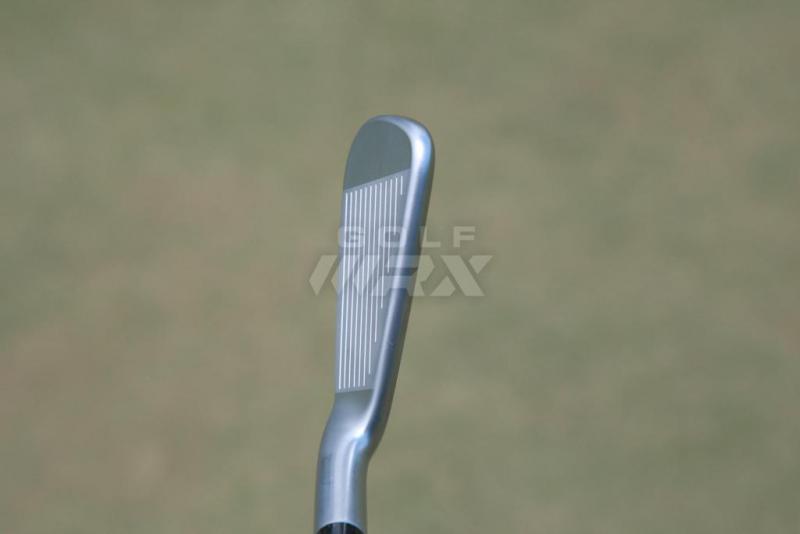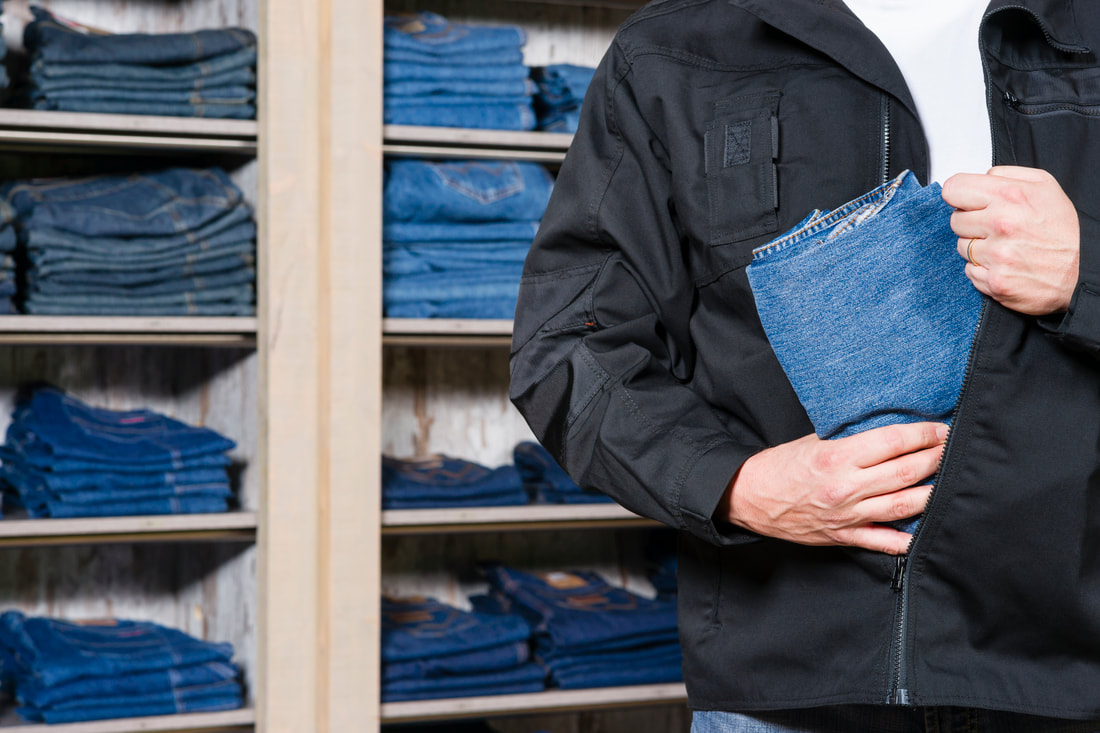Ping Iblade Irons

So when the new Ping Iblade irons arrived ahead of launch, we headed straight for the golf course
We always aim of to try new golf gear the same way you or any other golfer out there would. We are not glued to launch monitors. We take the irons to the range, or to the fairway and shoot shots at different lengths and shapes. This is exactly what the Ping iBlade irons have allowed us to do.
CONTINUES BELOW…
Continue reading -> Ping iBlade Irons Unleashed
If you found this entertaining, you might enjoy
Ping I500 Irons
Let’s begin at the beginning. When I took the irons out of their delivery box, they made an immediate impression. The Ping iBlade is sleek and elegant. Its appearance is closer to a traditional style blade than any of its predecessors. Simple but effective details really give it an edge.
As you’d expect with better player irons the topline is quite thin but not so thin it was making it difficult for club members to hit.
The clubhead had a very clean look at address and the hydropearl chrome finish gives it an attractive and effective touch. Even though it was early, the dew had not subsided for the first few holes.
Continue reading below
Read more -> Ping G Crossover: Review
Ping says its new irons offer the asoftest, purest feel ever in a Ping irona. While I havenat tried every iron Ping has ever produced, I found these irons to be extremely soft across the full set, even the 4-iron felt really good from 200 yards out. This is due to the soft stainless steel used in the irons and the insert of elastomer behind the head.
Forgiveness is the most impressive feature of the Ping iBlade. As less weight can be carried, forgiveness decreases with smaller clubheads. Ping has counteracted that by adding heavier tungsten weights into the toe of all Ping iBlade irons and it really helped, especially on the longer irons.
“I seemed to be hitting these irons a little further than my current irons, but the key aspect for me was the consistency”
The 4-iron was consistently hit from the fairway and the tee. It also produced consistent results, which is remarkable for someone who can be prone to misaligning a long iron.
The sole moved well through the turf with the shorter irons and made a soothing sound when it came in contact with the ball.
Continue reading below
Read more -> Ping completes family with G iron
The distance is my last observation on the Ping iBlade Irons. I seemed to be hitting these irons a little further than my current irons, but the key aspect for me was the consistency of that distance, even when I didnat find the centre of the face.
Although these irons were made for the lowest handicapper (Ping claims so), I think they can be used by anyone.

Ping Announces Iblade Irons
PING has not released an S55 iron in 3 years. This release gap gave the company the opportunity to both make improvements as you would expect in a three year evolution and to remind golfers of the fact that PING makes blades.
iBlade – It’s right there in the name.
The iBlade was designed for players with better shot creation skills who do not want to rely on technology too much. That said, the enhanced forgiveness (by blade standards), suggests the iBlade is an excellent choice for those who might want a more compact iron than their ability would otherwise allow for.
If you are interested in iBlade performance details, and nothing else, please skip to the data. Continue reading if you want to learn more about iBlade.

Deathbymuffin
These are both beautiful clubs. The most surprising thing about these clubs is their similarity in address. I was expecting a chunky topline and significant offset in the M2, but it’s footprint looked almost exactly the same as the M1, outside of the chrome finish on the M2 versus the frosted finish of the M1. At address, the M2 looked almost like a player’s iron. Both clubs get an A in my looks department.
Although the M1 was a little thicker than other player’s irons, it felt more forgiving. The M1 felt great on well-struck shots. It had a good mid-trajectory, and the same workability I have come to expect of a player iron. TaylorMade was right when he said that the M1 felt more flexible than traditional players irons. Had a nice soft feel at impact, mishits didn’t sting and left you with a more playable result. A really nice combination of the better attributes of both player’s and game improvement irons. I’ve been playing with an old set of Tommy Armour blades, but I’ve been recently wanting more forgiveness for when I’m stuck with my B or C swing. These are definitely something I can see myself buying based on their early returns.
It’s not clear if the shaft or the design of your clubhead are to blame, but I can tell that the M2 has a significantly different impact than the M1. This club launches the ball high, arguably ridiculously so. This bad boy was throwing Jason Day moonbombs. Didn’t seem to matter what kind of swing I put on it, the ball launched high, flat and dead straight. It was very forgiving, and I’d love to own a set for those times when my swing gets out of control. I didn’t really try to flight it at all, so I’m not sure what it’s capable of at this point. One other note was that the M2 had a clicky feel at impact. I didn’t mind it as the M2 felt sweet. It was clicky at impact, but it wasn’t a problem. I think these clubs will be big winners with the mid-to-high handicap set.
The M1 is a fine iron, but doesn’t really stand out in any way from other irons of its class.
The M2 is, however, an iron on steroids. I’m really starting to love this thing. It’s super forgiving and just goes and goes. According to my laser, flush shots were going 195 yards (my usual blade 5 iron distance) and very high. I can’t help but think golf would be a whole lot easier, particularly longer courses with long par 3s, with a full set of these in my bag.

Description of the Product
The Ping iBlade is a soft, pure feeling iron that has the perfect amount of precision and workability to handle the toughest shots. The iBlade iron is a player’s tool. It was designed for golfers who want a thin topline, minimal offset and compact blade shapes. Featuring a clean and streamlined look with ultimate feel, the iBlade offers a player’s look without sacrificing forgiveness. A tungsten plug in the toe of the club provides the iBlade with forgiveness that’s equal to many game improvement irons. The thin, high speed face increases ball speeds for higher launch trajectories and better precision. The 431 stainless steel used in Ping is combined with an Activated Elastomer insert, which activates on impact to dampen vibrations and provide a softer feeling and fine-tune the sound.

Weight Savings
This is usually the part where manufacturers start talking about massive distance gains. But not PING. Today? Not with the iBlade.
If you were a fan of this, you might also be into
Ping G410 Irons
PING used its weight savings to place a huge amount of high-density (Specific gravity 17 for science nerds), tungsten into the toe and heel of the iBlade. Then it polished and blended it with the other iron so that you don’t even know it was there.
I suppose you might call that invisible technology.
All that mass leads to a 15% increase in inertia (forgiveness), and that higher MOI is achieved without increasing the blade size. This is no small detail. Workability has been successfully used by the industry as an euphemism to describe unforgiving. PING set out to untangle the two, and develop a player’s iron that can be both forgiving and workable.
All of this is to put it in context. Jertson admits that iBlade may not be as flexible as the i Iron in 3-5 irons. However, the PW 6-8 Irons have almost identical inertia, despite iBlade’s workability.

An Iron Of Opposites
If the baseline is business as usual and the status quo, then iBlade can be described as an iron of contradictions.
Instead of cramming as much technology as possible into the new offering, PING challenged itself to remove anything unnecessary, defy convention and ultimately our expectations.
The industry as a whole thrives on visible technology; movable weights, shiny sole plates, and elaborate cavity badging, but PING is gambling that the iBlade player is more interested in quantifiable performance.
If this was up your alley, you might appreciate
Ping I200 Irons
This is not to suggest that the iBlade has no tech, but PING has made every effort to simplify and, in a small way, to obscure some of the iBlade’s technology.
Just because you can’t see it, however, doesn’t mean it isn’t there, so let’s quickly run down the list.

Details, Details, Details
How did the engineers at PING do it?
To start, the iBLADE has an increased MOI because of its use of near “pure” tungsten, which is denser than material used in the past. The tungsten is inserted into the toe of the club, creating a heavier toe weight to give the player forgiveness when they need it.
Engineers were also able to make a high-speed, thin clubface measuring only.068 inches, half the thickness as the S55. The new face allows the iron to gain 6 yards longer distance with long irons and launch at higher speeds. It also gives the club more accuracy throughout the set.
One of my favorite things about a blade or muscle back is the feeling the club provides when you hit it solidly. The iBLADE takes that feeling to another level with its Activated Elastomer, with 1.6x more elastomer in the design than the S55.
The iBLADE can do all of that and more. I decided to see how much I could work the ball with the iBLADE on one of our Foresight GC2 Launch Monitors.

Golfwrx
On
On
On
GolfWRX Forum Members have access to exclusive giveaways and testing threads. For Giveaways — we give away everything from golf clubs to golf balls to GPS units — all it takes is a forum name. Enter any Giveaway, and we select winners randomly. Then, you can enjoy the prize however many times you like.
The process for Testing Threads is a little more complicated. GolfWRX Forum members sign up to try the latest products and provide detailed reviews. Being the intelligent golf-equipment users they are, GoflWRX Members are able to provide the most-informed and unbiased reviews on the Internet.
In this Testing Thread, we selected 75 members to test a TaylorMade M1 2017 7-iron and TaylorMade M2 7-iron. Each of the clubs were built with the stock lofts and shafts — M2 2017 (28.5 degrees) with a TaylorMade Reax shaft, and M1 2017 (30.5 degrees) with a True Temper Dynamic Gold S300 shaft — and the testers were instructed to post their review of the clubs here.
We’ve selected the reviews that we deemed most informative and educational from the 75 testers. Each post has been edited for clarity, brevity and grammar.
Thanks to all of those involved in the testing!

Golfnut5438
Looks: As expected, I preferred the M1 with less offset, slightly smaller sole and a smoother finish. Less glare looking down on the iron. I must say the M2 did not look as bulky, or have as much offset as I thought it might have.
Feel: This was a close race, probably due to the shafts as much as the heads. The M1 was just a slight bit smoother feeling on solid shots. But the M2 was not bad at all, just not quite as smooth.
Performance and distance: The range is slightly inclined up in length, making it difficult to determine exact yardage gains. My gamer 7-iron iron had a lower trajectory, but both irons were higher than mine. The turf was not dug by either iron. Both irons have lofts that are at least a degree higher than mine so they may fly a bit farther than me gamers. Neither iron flew “too” high, however. Might be a little harder to hit knock down shots, though.
Final thoughts: I had hit both the M1 and M2 irons last year during a fitting day, but did not like either. I thought both the M1 and M2 models were better this year. I asked a fellow member at our club to hit both and he felt the M1 was his preferred model, and he is a 20-index player. The M1 was the winner of this game. I will try and see if I can locate both a 5 iron and 9 iron to see if a full set might be a winner for me.

Brock9007
Although the TaylorMade irons M1 and 2 look very similar, I have to admit that there really isn’t much between them. To find out which one is which, I’d have to take it apart.
The first 10 balls I hit were with M1 and 6/10 felt great, while the other 4 were toe hits, which I felt and the distance reflected that. It was exactly what I had expected from a club designed for players with lower handicaps. My Srixon Iron was only 1/2 as far away, and the distance was also a bit longer. Dispersion was very close. They did not feel the same as my Srixon center hits, however.
The M2 received the next 10 (ok 15) balls. Wow! Although the ball did pop off of the club’s face, it wasn’t on flight. I waited for it to drop and then WTH! It was about 5-8 yards longer than the balls with M1, which is with just a few toe shots. I did some smooth swings and then very aggressive swings and was a little amazed at this iron. Just like the M1, it does not have the forged feeling and does have a clicky sound (which I hate).
Bottom line: M2 is the longest iron I have ever hit. Although I love my 545s I can see myself enjoying M2 quite easily. In fact, this M2 7 iron will go in my bag so I can play against the Srixon 545 at the course.

Breaking Tradition
The following are my top choices for a blade-iron: Titleist MBs and Mizuno MPs.
These are all beautiful golf clubs. When you strike them properly it’s as if you have seen the light.
That doesn’t stop many golfers from playing them though. Personally, I believe it’s to their own detriment. Some people believe that playing a blade is the ultimate learning tool because there is no room for error.
We’ll have to agree to disagree on that one.
I asked Woody Lashen, the co-owner of Pete’s Golf Shop, his thoughts on golfers who push themselves into a true blade. In his opinion if you’re not trying to play golf for a living it is just not necessary to play a blade iron these days.
You’ll actually see less classic looking irons if you take a look at many of the players who are on tour.

Bstein74
Feel: I hit the M2 first, and found it to be very solid when hit on the screws. There was almost no feel off the club face at all. It was obvious when I missed it but not harsh. Hit the M1 next, and same type of feel when hit solid. Mishits are much more severe, but that’s what I expected.
Performance and distance: I was interested to know how they would perform. The M2 flew high into the air and continued to go for hours. Although my vision isn’t as good, it seemed like the M2 was able to get me about 10-20 yards longer than my Wilson D300. It was difficult to flip the M2 over. That was my only complaint. Got a lot more hook compared to my D300. I don’t know if it was the REAX shaft but I would like to see a shaft that is less spinny to fix that.




















/cdn.vox-cdn.com/uploads/chorus_asset/file/23133262/1235479424.jpg)